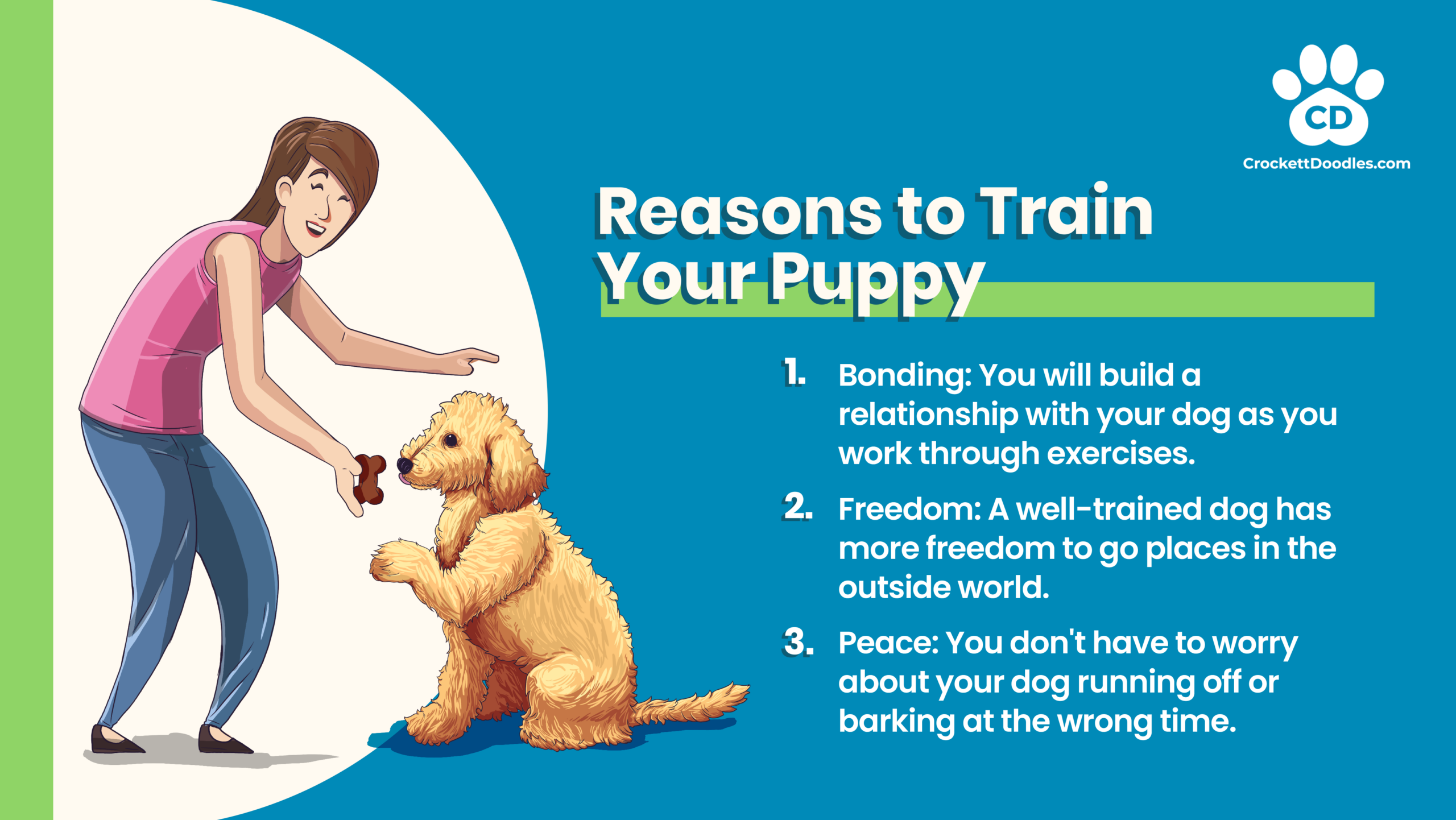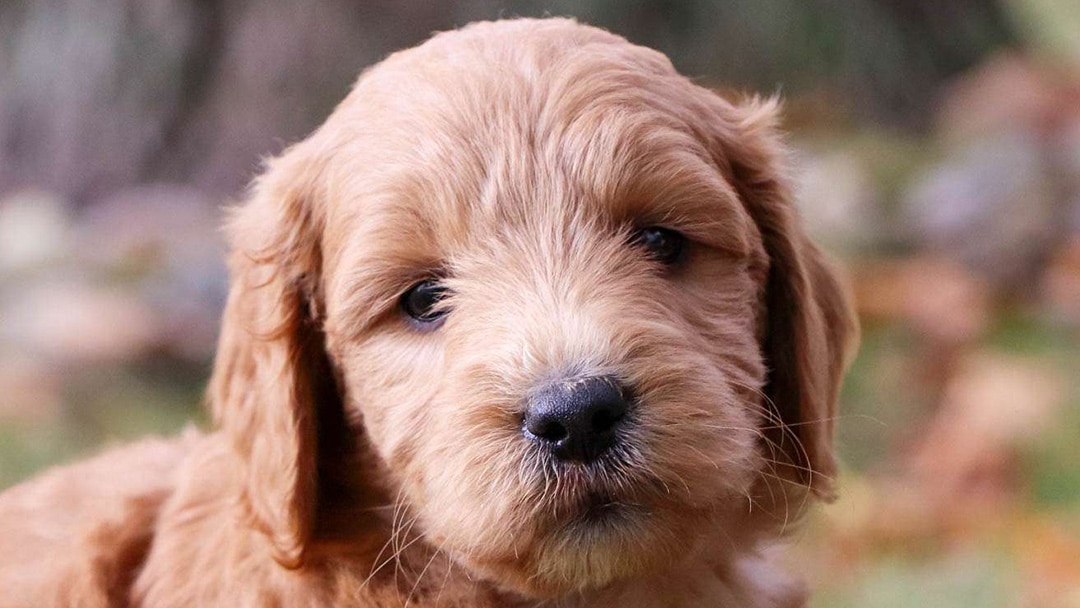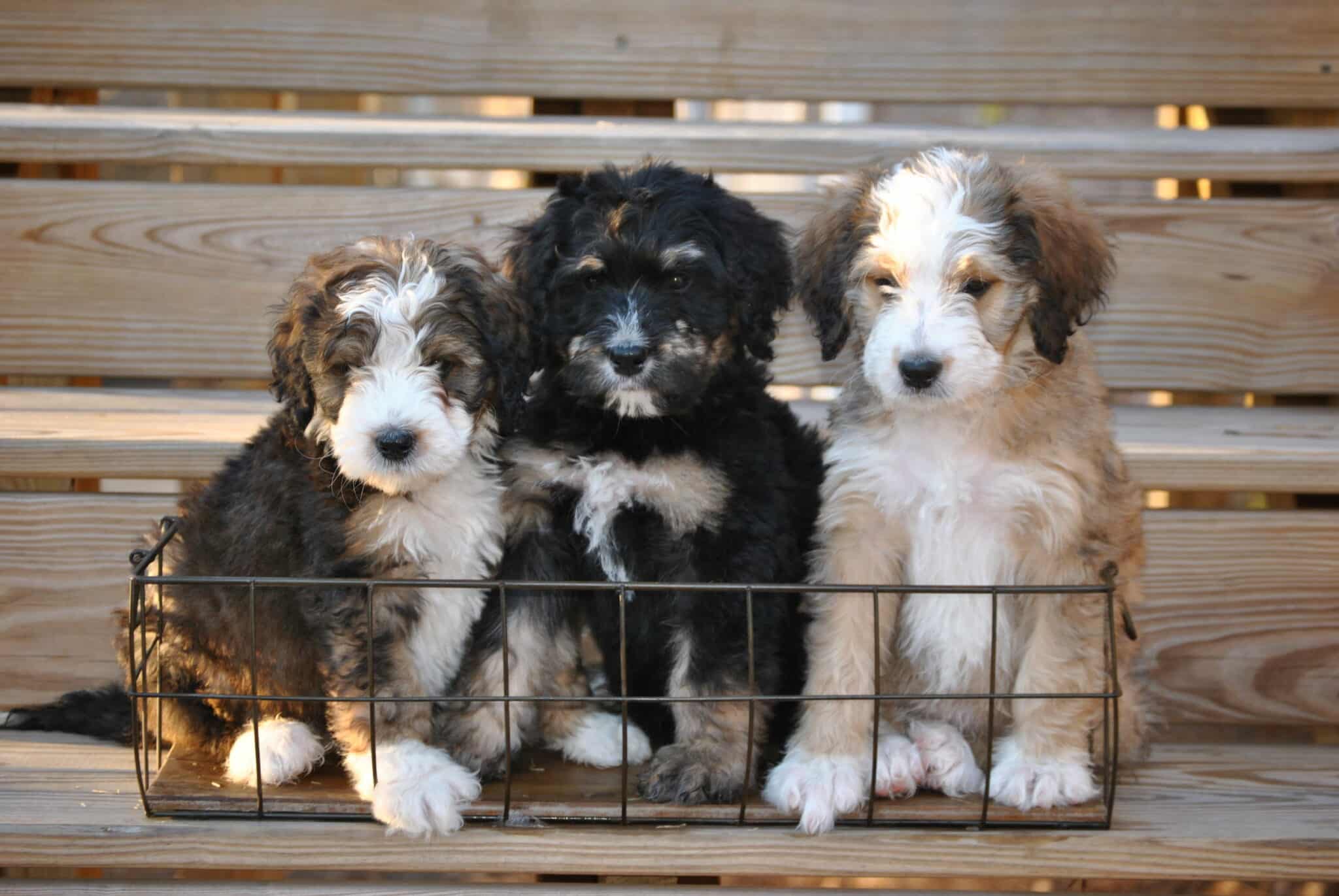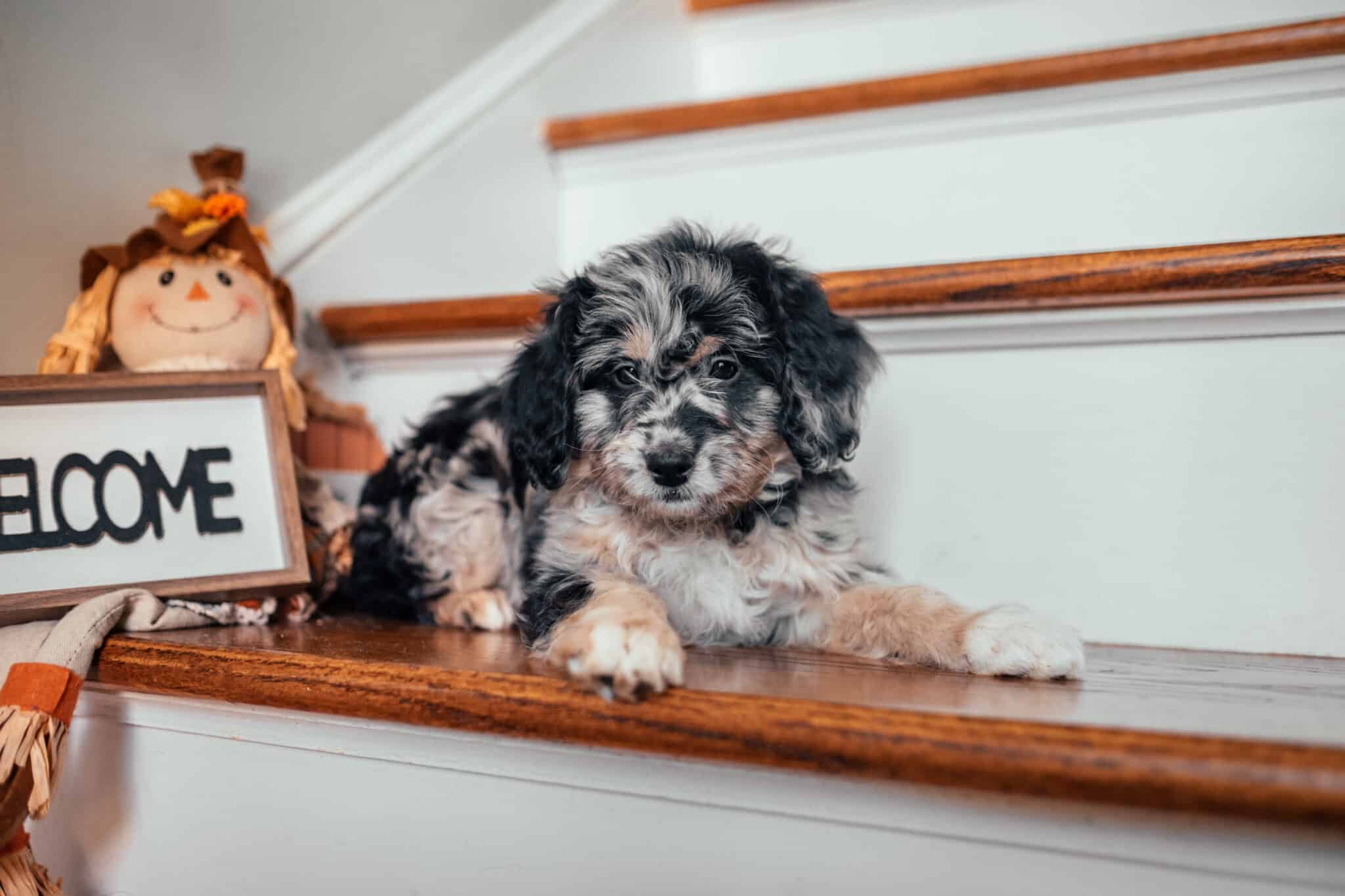Dog Training 101: A Guide to a Well-behaved Dog
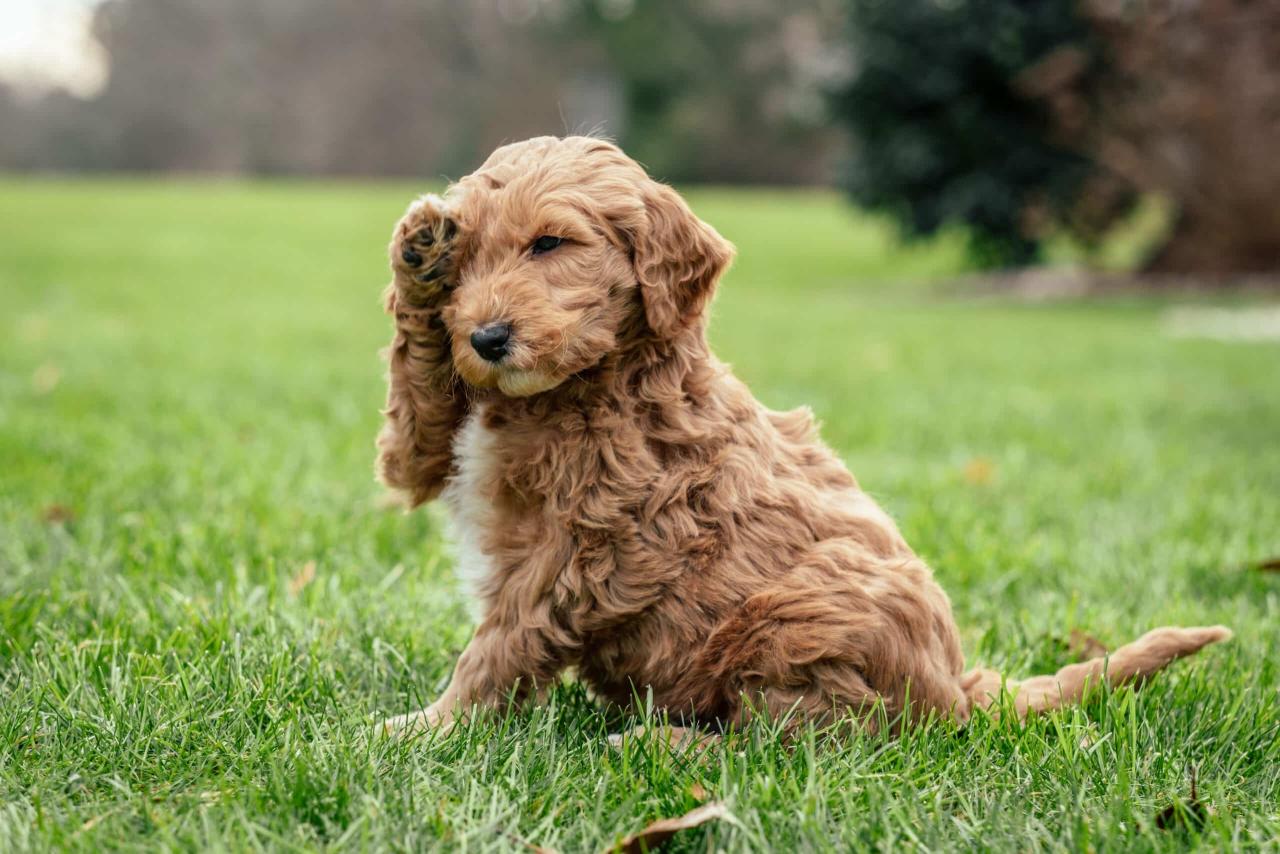
Everyone wants a well-behaved dog. Dogs are often eager to learn and please their owners. We believe it is never too early to start the dog training process. The moment you get your new puppy, you can start teaching good manners. Every interaction with your puppy can be used to help him understand the house rules.
Dog training is applying the laws of behavior on your dog. The idea is that behavior that is reinforced will be repeated. For instance, if you want your dog to do something, then you’ll use positive reinforcement (aka treats) to encourage your dog to do that same behavior more often. It is much easier to add positive behavior than undo unwanted behavior.
Don’t expect results overnight. This whole process involves patience and consistency. Once your dog understands the basic commands like sit, stay, and come, you can move on to more complicated commands. If you experience setbacks, you may want to consider enlisting the help of a dog training program.
Reasons for Dog Training
Besides the obvious reason of wanting a well-behaved dog, there are other reasons that training your dog is a good idea:
- Bonding. You will build a relationship with your dog as you work through exercises.
- Freedom. A well-trained dog has more freedom to go places in the outside world.
- Peace. You don’t have to worry about your dog running off or barking at the wrong time.
The History of Dog Training
Believe it or not, there are many different approaches to dog training. Over time, the styles and techniques have changed based on new observations about dog behavior.
The Traditional Method (often shown on TV) is based on the thinking that a dog should respect his owner as the alpha. The training is usually centered around punishment. The problem with this method is that it is a temporary fix and tends to make a dog fearful or aggressive.
When animal psychologists started analyzing dog behavior, they found that dogs didn’t really conform to a social hierarchy. What came next was a focus on behavioral science. The Modern Method came from the idea that a dog is most likely to repeat something if there is a favorable outcome. Trainers started to focus on reinforcing positive behavior rather than correcting bad behavior.
Some will try to combine the two in order to retain a sense of control. What they don’t realize however, is that by punishing one bad action, the dog might do a different one. You will end up with a confused puppy and a frustrated owner. It is much easier (and will help your relationship with your dog) if you focus on reinforcing the behavior you DO want from your dog.
Before You Start training
Remember that your dog’s primary motivation is to be your friend and make you happy. Training simply uses that motivation to associate good behavior with pleasing you. Make sure you use consistent visual and verbal cues to indicate what you want the dog to do, and give a reward after he does it.
You will not be able to teach your dog a new command in a day. It will take multiple sessions over the course of several days. I recommend sticking to just one or two behaviors a session. A session should be around 5 minutes—no longer than 15 minutes.
Remember to remain close to your dog during the course of this session. Try to focus only on one task at a time, especially at the beginning. You should only give the treat immediately after your dog accomplishes the task you have set. Keep in mind that you should be using a combination of verbal and visual cues that your dog will learn to associate with the appropriate command.
Always end a session on a positive note. After concentrating on the previous task, it is helpful to let the dog unwind by playing with a favorite toy.
Recommended Dog Training Program
I highly recommend the PetSmart Dog Training Program. It is very reasonable, and you can easily work your way through the following training sessions:
The following is from the PetSmart website:
Puppy Training
Start your new pet off on the right paw with puppy training classes that encourage and reinforce good behaviors. Created for puppies 10 weeks to 5 months old, our Puppy Education course is a great introduction to simple cues and basic manners, using hand signals, verbal cues and loose-leash walking to set a foundation.
Our dog trainers work with your puppy’s natural inclination to stay near you, teaching potentially lifesaving cues like coming when called. We’ll also address any problem behaviors, gladly coaching pet parents through the first months of life with a puppy.
- An introduction to simple cues, such as “sit,” “come” and “stay”
- Learn basic manners
- Practice socialization with people and other dogs
- Work on loose-leash walking
- Course length: 6 weeks
- Canine Good Citizen
- Therapy Dog
Beginner Training
Specifically tailored to dogs five months and older with no previous training, our Beginner Education course gives your pet a solid foundation of basic behaviors. Untrained adolescent and adult dogs can become easily distracted by their environment, which is why it’s important to work on coming when called, leash- pulling, and impulse-control exercises like “stay,” “leave it” and “sit.”
PetSmart’s dog trainers are patient and skilled, helping manage untrained dogs throughout the basic dog training course. You’ll see great results, and the frequent rewards you provide your dog during each stage of training will make her more attentive to you.
- An introduction to simple cues, such as “sit,” “come” and “leave it”
- Work on problem solving
- Learn basic house manners
- Practice loose-leash walking
- Course length: 6 weeks
Intermediate Training
Wouldn’t it be nice if your trained dog could stay in place while you walked into the other room for a few minutes? Or if he’d obediently remain by your side in a crowd? If your dog already knows basic cues, our Intermediate Education Course can help him achieve the same results in situations involving more distance, duration and distractions – this intermediate dog training course also covers new behaviors such as “heel,” “wait” and “go to bed.” Our caring dog trainers will keep the work personalized and upbeat as you take each new step toward a complete training.
- Get a review of behaviors already learned
- Practice behaviors with added distractions
- Learn “heel,” “wait,” “go to bed” and more
- Course length: 6 weeks
Prerequisite: puppy training or beginner education, or comparable skill level.
Advanced Training
The final step in a well-rounded curriculum, this advanced dog training course helps ensure reliability in a variety of situations – with fewer rewards. Our Advanced Education course covers supervised separation, impressive tricks and other special behaviors, and it enforces cues learned in earlier phases. In addition to the excitement and pride you’ll experience from having a dog that can behave reliably in the real world, you’ll receive a graduation diploma to mark your accomplishments.
- Helps dogs master advanced behaviors and tricks
- Work on supervised separation
- Play specialized games to build reliability
- Practice behaviors with increased distractions
- Course length: 6 weeks
Prerequisite: intermediate dog behavior training.
PetSmart also offers private dog training, dog training camps, and dog trick training.
You may also want to consider the Canine Good Citizen test: http://www.akc.org/dogowner/training/canine_good_citizen/links.cfm
Or you may consider training your dog as an official therapy dog: http://www.tdi-dog.org/
